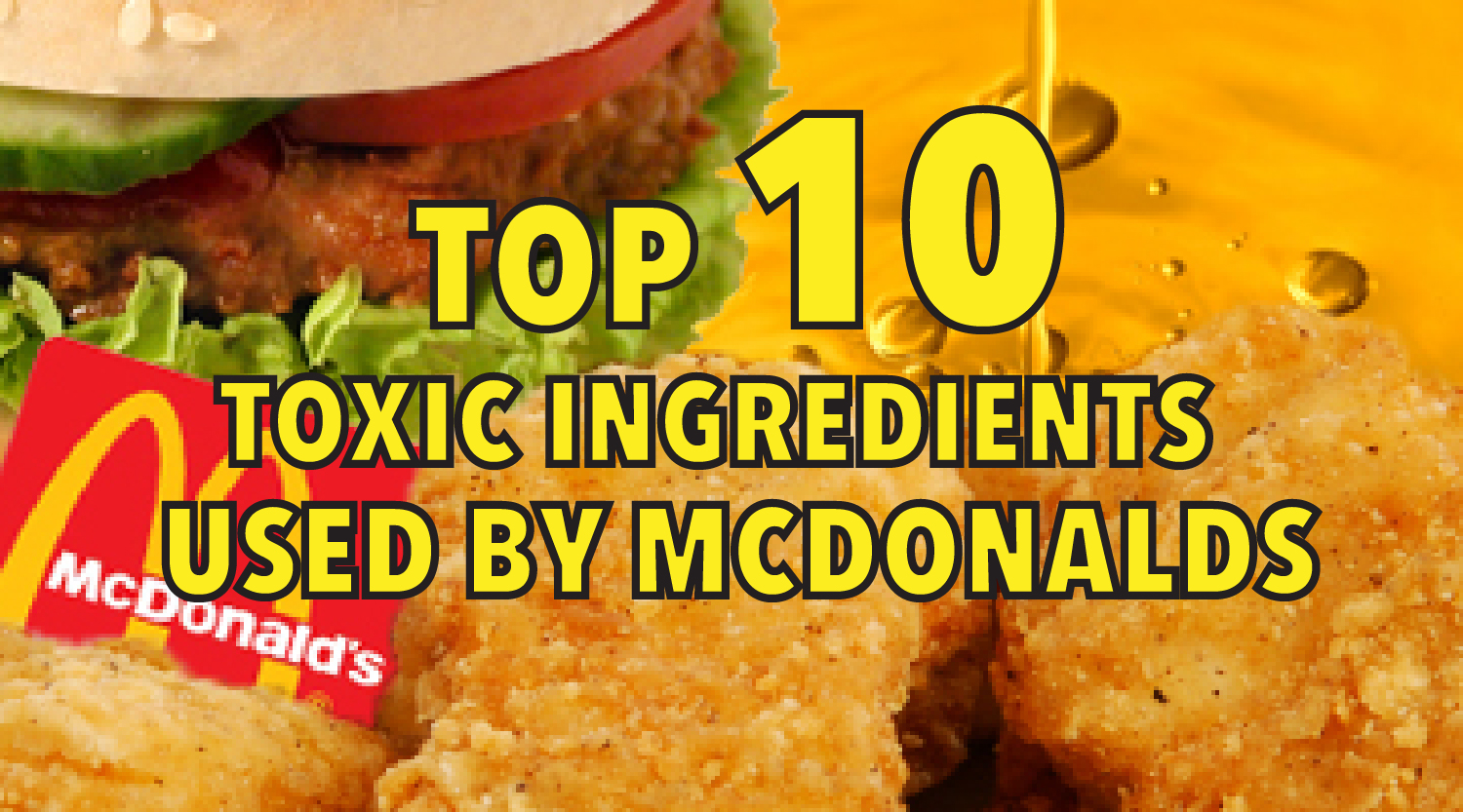McDonald’s has a very complicated brand image: entirely unhealthy, yet an affordable option that is almost universally available. McDonald’s isn’t a place we go to get our nutritional needs met, and with most research connecting our Western/fast food diet directly to various diseases, such as diabetes, cancer and heart disease, one begins to wonder why this company continues to serve billions and billions. Availability is a key to McDonald’s worldwide success. This fast food mecca can be found in every airport, off rural highways, on college campuses and, who knows, maybe one day the golden arches might even show up in Arches National Park. All joking aside, the global addiction to McDonald’s is frightening, and assuming that McDonald’s isn’t going away anytime soon, then perhaps it is time you know some of the toxic ingredients that can be found in a typical McDonald’s menu.
Acrylamide
The items on a McDonald’s menu may vary slightly from country to country, but there is one fried food you can expect to find worldwide: fries. In Canada, these “Famous Fries” can be served with gravy or cheese curds, but all McDonald’s fries contain one very unhealthy element: acrylamide. While acrylamide is not an added ingredient, it is a result of frying food, one of the most common methods of cooking at McDonald’s. Acrylamide levels are particularly high in fried potatoes. The debate over the link to acrylamide and cancer continues, yet this chemical compound can be found on the Proposition 65 list. This is a list of chemicals known to the State of California to cause cancer or reproductive toxicity. Additionally, the National Toxicology Program lists acrylamide as a chemical which may be “reasonably anticipated to be a human carcinogen.” How long a food is cooked can also affect acrylamide levels. For example, if your fries are cooked longer and their color turns a dark brown, then these fries will contain much higher levels of acrylamide than fries which are cooked for less time.
Azodicarbonamide
Almost every bun at McDonald’s contains dough conditioners. These are ingredients which are used to “improve” the texture of the dough. McDonald’s uses azodicarbonamide in their buns, from the sesame to the McRib bun. Azodicarbonamide is also a chemical foaming agent, a blowing agent for plastics and rubbers and a common food additive, and it is even found in some tobacco products. In the UK, you cannot find azodicarbonamide in McDonald’s buns, because it is a banned food additive there. It is also banned in most European countries, as well as Australia. In Singapore, using azodicarbonamide can result in a 15-year prison sentence and a fine of $450,000.
Some McDonald’s food items are prepared with a liquid margarine which contains partially hydrogenated soybean oil. Partially hydrogenated oils are very high in trans fat. Trans fats are known to increase one’s risk of heart disease and may also add to one’s risk of developing type 2 diabetes. Trans fats raise your LDL (bad) cholesterol which increases your risk of cardiovascular disease.
